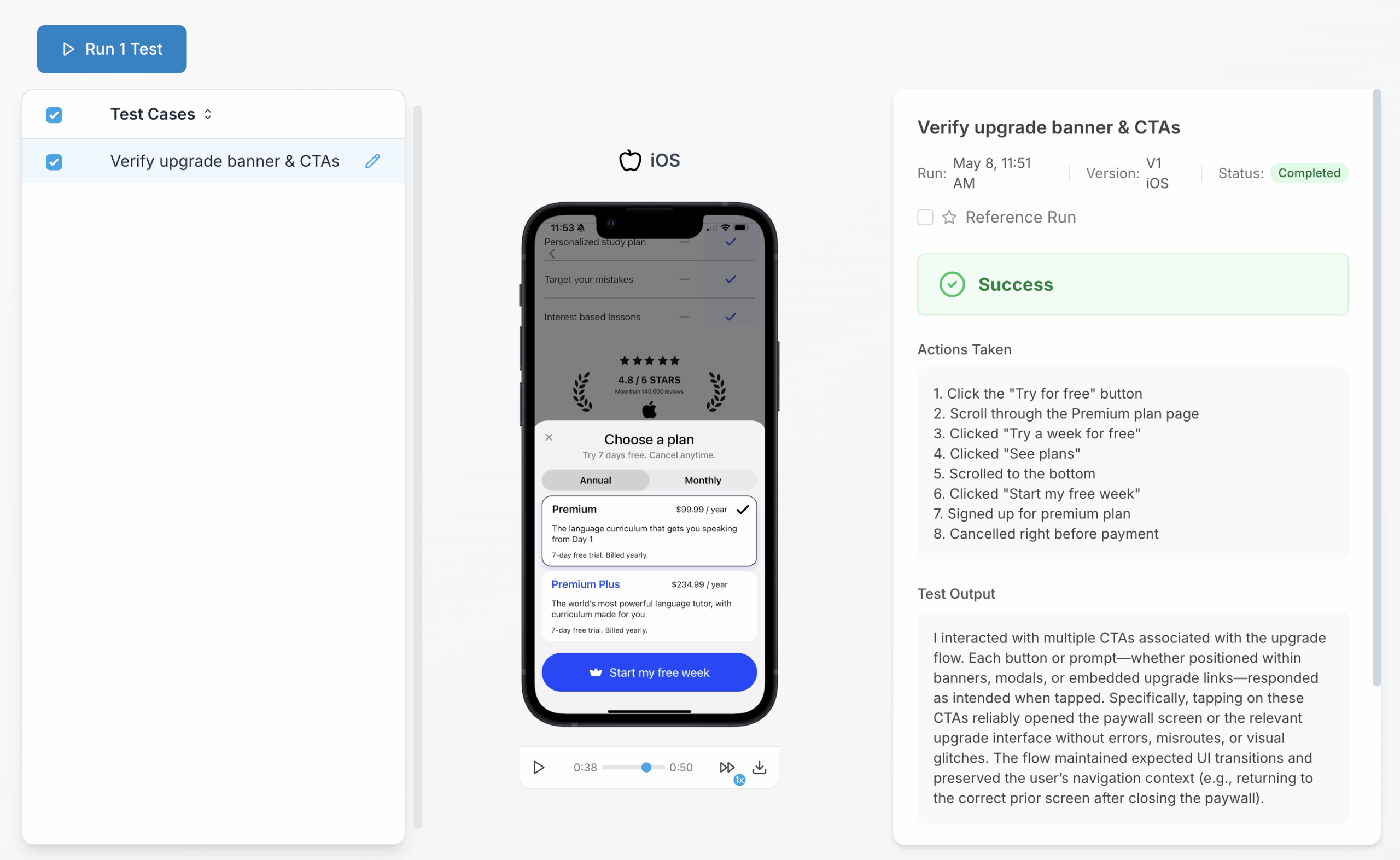
Table of Contents
Overview
Tired of endless manual scripting for mobile app testing? In today’s fast-paced mobile landscape, ensuring the quality and reliability of your iOS and Android applications is paramount. QualGent AI emerges as an intelligent solution, offering a fresh approach to mobile QA by automating testing with the power of artificial intelligence. This platform promises to eliminate tedious manual scripting, accelerate release cycles, and enhance overall productivity. Let’s dive into what makes QualGent AI a contender in the mobile QA automation space.
Key Features
QualGent AI boasts a suite of features designed to streamline mobile app testing:
- AI-based UI testing: Leverages artificial intelligence to understand app UIs and automatically generate test cases. This significantly reduces the need for manual scripting.
- Supports iOS and Android: Provides comprehensive testing capabilities for both major mobile operating systems, ensuring broad coverage.
- Scriptless automation: Eliminates the need for writing complex test scripts, making automation accessible to a wider range of users.
- Bug detection: Automatically identifies and reports bugs within the application, allowing developers to address issues quickly.
- CI/CD integration: Seamlessly integrates into continuous integration and continuous delivery pipelines, enabling automated testing as part of the development process.
How It Works
QualGent AI simplifies mobile app testing through an intelligent, automated process. The AI engine begins by scanning the app interface, identifying all functional elements, such as buttons, text fields, and images. Once the UI is understood, the AI simulates user interactions, mimicking real-world usage patterns. During these simulations, QualGent AI automatically detects bugs, reports test outcomes, and integrates with development pipelines for streamlined QA. This automated approach allows for faster and more efficient testing, ultimately leading to higher-quality mobile applications.
Use Cases
QualGent AI can be applied across a variety of mobile app development scenarios:
- Mobile app QA automation: Automate the entire QA process for mobile applications, reducing manual effort and accelerating testing cycles.
- Regression testing: Ensure that new code changes do not introduce regressions by automatically re-running test cases after each build.
- Accelerated development cycles: Speed up the development process by automating testing, allowing developers to iterate more quickly.
- Continuous integration testing: Integrate automated testing into the CI/CD pipeline to ensure that every code commit is thoroughly tested.
Pros & Cons
Like any tool, QualGent AI has its strengths and weaknesses. Let’s examine the advantages and disadvantages of using this platform.
Advantages
- No manual scripting: Eliminates the need for writing and maintaining complex test scripts, saving time and resources.
- Fast bug detection: Quickly identifies and reports bugs, allowing developers to address issues promptly.
- Works across mobile platforms: Supports both iOS and Android, providing comprehensive testing coverage.
Disadvantages
- May miss context-specific bugs: While AI-powered, it might not always catch bugs that require a deep understanding of the application’s context.
- Requires initial setup for optimal AI tuning: Achieving optimal performance requires some initial setup and tuning of the AI engine.
How Does It Compare?
When considering AI-powered mobile QA solutions, it’s important to understand how QualGent AI stacks up against the competition. Test.ai is another AI-driven platform, but it places less emphasis on UI learning compared to QualGent AI. Applitools, on the other hand, excels in visual testing but lacks a mobile-first design, making QualGent AI a potentially better fit for mobile-centric development teams.
Final Thoughts
QualGent AI presents a compelling solution for teams looking to automate their mobile app testing processes. Its scriptless automation, AI-powered bug detection, and cross-platform support make it a valuable tool for accelerating development cycles and improving app quality. While it may require some initial setup and might not catch every context-specific bug, the benefits of reduced manual effort and faster bug detection make QualGent AI a worthy contender in the mobile QA automation landscape.

